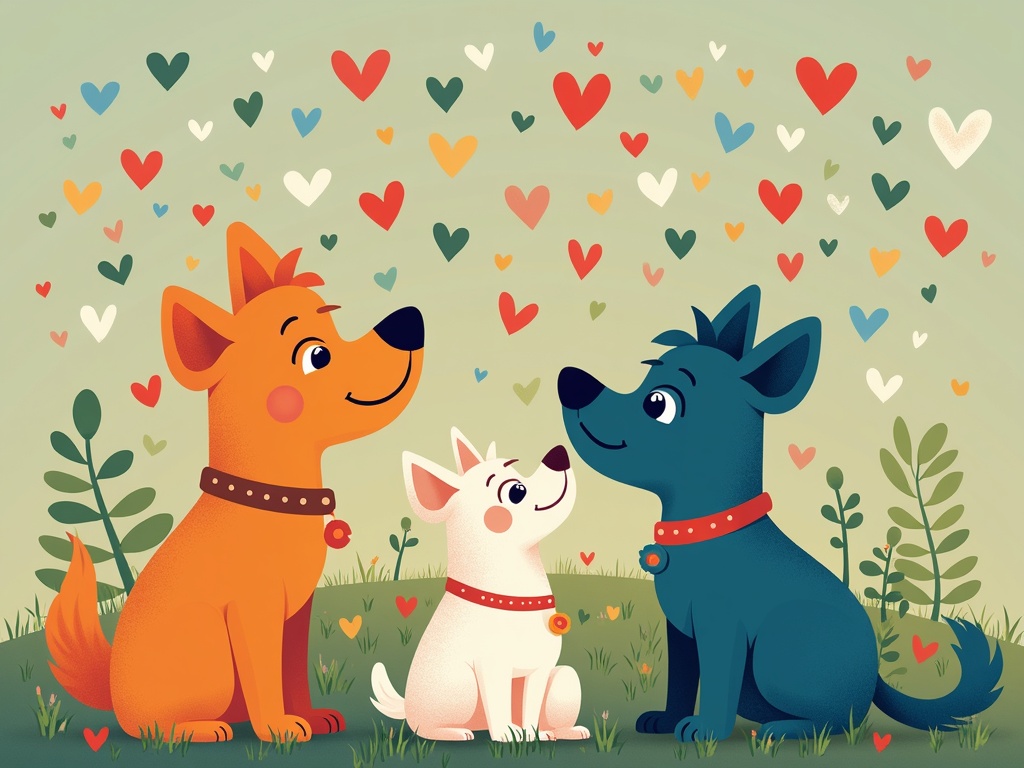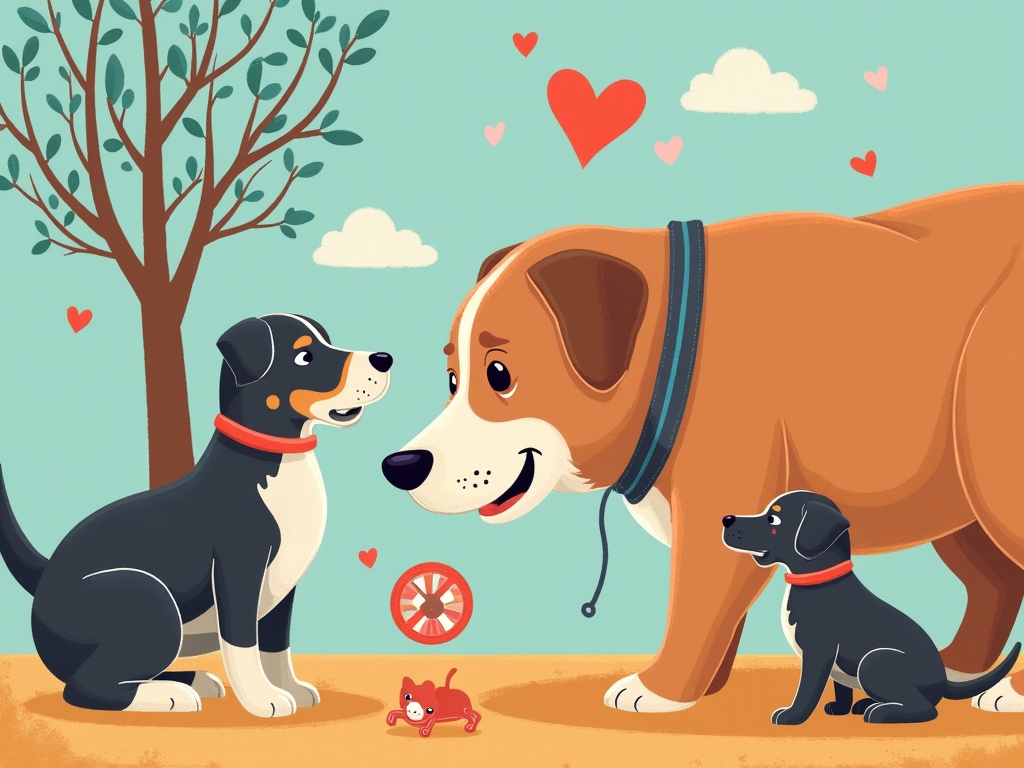Decoding Canine Stress: Unveiling the Signs of Overstimulation in Dogs
Ever been to a crowded concert where the noise, lights, and throngs of people felt like an assault on your senses? Imagine that same feeling, but you're a creature with a super-sensitive nose, ears that can pick up the faintest sounds, and an inability to verbally express your discomfort. That's often the reality for dogs in our increasingly stimulating world. Recognizing the signs of overstimulation in dogs is crucial for their well-being and allows you to step in before the situation escalates into anxiety or even aggression.
What Exactly is Overstimulation in Dogs?
Overstimulation occurs when a dog is exposed to more sensory input than it can effectively process. This input can come from a variety of sources, including:
- Auditory: Loud noises, such as fireworks, traffic, or children screaming.
- Visual: Flashing lights, fast movements, or a crowded environment.
- Tactile: Excessive petting, rough handling, or being swarmed by other animals.
- Olfactory: Strong smells, like perfumes, cleaning products, or the scent of multiple dogs.
- Social: Interactions with too many people or animals at once.
While a little excitement can be good, especially during play, the key is balance. When a dog's brain becomes overloaded, it can lead to a cascade of stress hormones and behavioral changes.
The Subtle Signs: Recognizing Early Indicators
Catching overstimulation early is paramount. Many dogs display subtle cues before they become overtly stressed. These early signs can be easy to miss if you aren't paying close attention:
- Yawning: Not always a sign of tiredness; yawning can be a displacement behavior indicating stress.
- Lip Licking: Frequent lip licking, especially when no food is present, is another common stress signal.
- Whale Eye: Showing the whites of their eyes, often when someone approaches them.
- Turning Away: Avoiding eye contact or physically turning their head or body away from the source of stimulation.
- Panting: Panting, even when not hot or after exercise, can indicate anxiety.
- Stiff Body Posture: A tense or rigid body can be a sign of discomfort.
- Slowed Movement: A dog might move more slowly or cautiously in a stimulating environment.
It's crucial to understand your dog's individual baseline behavior. What's normal for one dog might be a sign of stress in another. Knowing your dog's typical behavior allows you to more easily identify deviations that signal overstimulation.
Escalating Stress: More Obvious Signs of Overstimulation
If the early signs are ignored or go unnoticed, the dog's stress levels will escalate, leading to more pronounced behavioral changes:
- Pacing: Restlessness and an inability to settle down.
- Trembling: Shaking or shivering, even when not cold.
- Excessive Barking or Whining: Vocalizations that are out of the ordinary.
- Destructive Behavior: Chewing, digging, or scratching, often directed at objects in the environment.
- Self-Soothing Behaviors: Excessive licking of paws or other body parts.
- Hiding: Seeking out a secluded spot to escape the stimulation.
- Loss of Appetite: Refusing food, even treats they usually enjoy.
These signs indicate that the dog is struggling to cope and needs immediate intervention.
Severe Overstimulation: When It Becomes a Serious Issue
In extreme cases, overstimulation can lead to fear aggression or even shutdown. These are critical situations that require careful handling and, in some cases, professional intervention.
- Growling or Snapping: A warning signal that the dog feels threatened and may bite.
- Biting: An act of aggression born out of fear or anxiety.
- Shutdown: Becoming completely unresponsive and withdrawn, seemingly shutting down to cope with the overwhelming stimulation.
If your dog displays any of these behaviors, immediately remove them from the stimulating environment and consult with a qualified dog trainer or veterinary behaviorist. Punishment is never appropriate in these situations, as it will only exacerbate the dog's fear and anxiety.
Why Are Some Dogs More Susceptible to Overstimulation?
Several factors can influence a dog's susceptibility to overstimulation:
- Genetics: Some breeds are naturally more sensitive than others. For example, herding breeds, like Border Collies, may be more reactive to movement and sound.
- Early Socialization: Dogs that were not properly socialized as puppies are more likely to be fearful and anxious in new or stimulating environments. Early socialization involves exposing puppies to a variety of sights, sounds, people, and experiences in a positive and controlled manner.
- Past Trauma: Dogs with a history of abuse, neglect, or traumatic experiences may be more easily triggered by certain stimuli.
- Medical Conditions: Underlying medical conditions, such as thyroid imbalances or neurological disorders, can sometimes contribute to anxiety and overstimulation.
- Age: Puppies and senior dogs may have a lower tolerance for stimulation than adult dogs. Puppies are still learning to regulate their emotions, while senior dogs may experience cognitive decline or sensory changes that make them more sensitive.
Prevention is Key: Managing and Minimizing Overstimulation
The best approach to dealing with overstimulation is to prevent it from happening in the first place. Here are some strategies to help manage and minimize your dog's exposure to overwhelming stimuli:
- Controlled Socialization: Expose your dog to new experiences gradually and in a controlled manner. Avoid overwhelming them with too much too soon.
- Create a Safe Space: Provide your dog with a quiet, comfortable space where they can retreat when they feel overwhelmed. This could be a crate, a bed in a quiet room, or even just a designated corner of the house.
- Avoid Triggering Situations: If you know your dog is easily overstimulated by certain situations, such as crowded dog parks or loud events, try to avoid them whenever possible.
- Desensitization and Counterconditioning: If you can't avoid triggering situations altogether, work with a qualified trainer to desensitize your dog to those stimuli. This involves gradually exposing them to the stimuli at a low intensity and pairing it with something positive, such as treats or praise.
- Provide Mental Enrichment: Mental stimulation can help tire your dog out and make them less reactive to their environment. Provide puzzle toys, training sessions, and opportunities for sniffing and exploring.
- Recognize and Respect Your Dog's Limits: Pay attention to your dog's body language and be willing to cut an interaction short if they start to show signs of stress. Don't push them beyond their comfort zone.
- Consider Calming Aids: In some cases, calming aids, such as pheromone diffusers or calming supplements, may be helpful. Talk to your veterinarian about whether these options are appropriate for your dog.
Seeking Professional Help
If you're struggling to manage your dog's overstimulation, don't hesitate to seek professional help from a certified dog trainer or a veterinary behaviorist. They can help you identify the underlying causes of your dog's anxiety and develop a customized plan to address their specific needs. Remember, addressing overstimulation is an ongoing process that requires patience, consistency, and a commitment to understanding your dog's unique needs. By learning to recognize the signs of overstimulation and taking steps to manage their environment, you can help your dog live a happier, healthier, and less stressful life. Your observant care creates a safer, calmer world for your canine companion.


